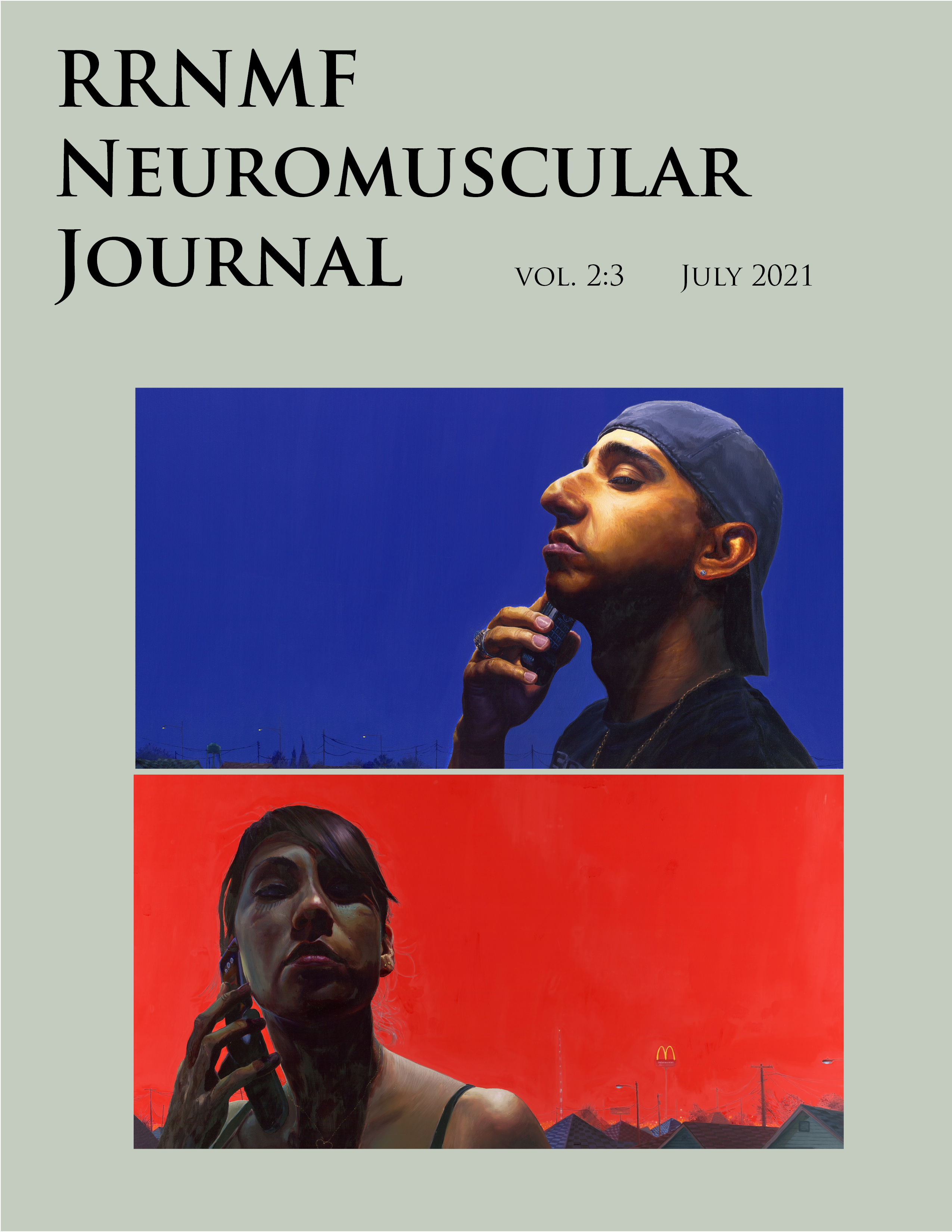Amyotrophic Lateral Sclerosis and Multiple Sclerosis: More Evidence Suggesting a Link
DOI:
https://doi.org/10.17161/rrnmf.v2i3.15146Keywords:
amyotrophic lateral sclerosis, central nervous system, gene, autoimmune disease, case reportAbstract
Objectives Previous reports of the concurrence of multiple sclerosis (MS) and amyotrophic lateral sclerosis (ALS) in the same patients suggest shared pathogenesis, with the C9orf72 mutation as a possible shared genetic link.
Methods: Symptoms, neuroimaging, and laboratory data were summarized for patients with ALS and MS within our ALS registry. Using age adjusted MS prevalence rates, we calculated the expected co-occurrence using the binomial test.
Results: Clinical and demographic features of the five patients (four female, one male) with ALS and MS are described. Because ALS more frequently occurs in men, observing 4/5 female patients with concurrent ALS/MS showed a borderline expectation difference (P=0.073). The observed co-occurrence of ALS and MS was 5X times higher than the expected frequency of 0.98 (P <0.004). Four patients were found negative for C9orf72.
Discussion: Our results suggest a non-random association between MS and ALS, although shared genetic etiology was not found.
Downloads
References
Wallin MT, Culpepper WJ, Campbell JD, Nelson LM, et al. The prevalence of MS in the United States. A population-based estimate using health claims data. Neurology, 2019;92:e1029-e1040.
Mehta PM, Kaye W, Raymond J, Punjani R, et al. Prevalence of Amyotrophic Lateral Sclerosis – United States, 2015. Center for Disease Control and Prevention Morbidity and Mortality Weekly Report, 2018;67(46):1285-1289.
Guennoc A, Maud P, Le Page E, Le Port D, et al. Co-occurrence of MS and ALS: a clue in favor of common pathophysiological findings? Amyotrophic Lateral Sclerosis and Frontotemporal Degeneration. 2018; 19: 500-505.
Goris A, van Setten J, Diekstra F, Ripke S, et al. No evidence for shared genetic basis of common variants in multiple sclerosis and amyotrophic lateral sclerosis. Human Molecular Genetics, 2014; 23 (7):19161922.
Turner MR, Goldacre R, Talbot K, Goldacre MJ. Autoimmune disease preceding amyotrophic lateral sclerosis – An epidemiologic study. Neurology, 2013;81:1222-1225.
Chio, Adriano, et al. "Prognostic factors in ALS: a critical review." Amyotrophic lateral sclerosis 10.5-6 (2009): 310-323.
Orton SM, Ramagopalan SV, Brocklebank D, Herrera BM, Dyment DA, Yee IM, Sadovnick AD, Ebers GC. Effect of immigration on multiple sclerosis sex ratio in Canada: the Canadian Collaborative Study. J Neurol Neurosurg Psychiatry. 2010 Jan;81(1):31-6.
Wallin MT, Culpepper WJ, Coffman P, Pulaski S, Maloni H, Mahan CM, Haselkorn JK, Kurtzke JF; Veterans Affairs Multiple Sclerosis Centres of Excellence Epidemiology Group.The Gulf War era multiple sclerosis cohort: age and incidence rates by race, sex and service. Brain. 2012 Jun;135(Pt 6):1778-85.
Compston A, Coles A. Multiple sclerosis. Lancet. 2002 Apr 6;359(9313):1221-31.
Walhout, Renée, et al. "Patterns of symptom development in patients with motor neuron disease." Amyotrophic lateral sclerosis and frontotemporal degeneration 19.1-2 (2018): 21-28.
Downloads
Published
Issue
Section
License
Copyright (c) 2021 Kristyn Pocock MD, Idil Baysal BA MSN RN, James Scanlan PhD, Michael Elliott MD, Angeli Mayadev MD

This work is licensed under a Creative Commons Attribution-NonCommercial-NoDerivatives 4.0 International License.

